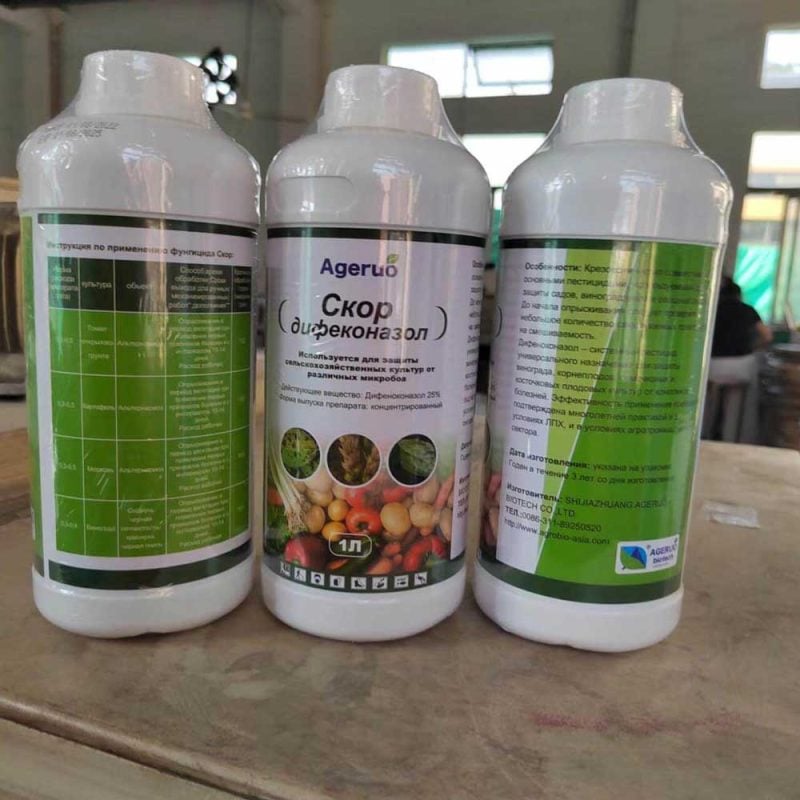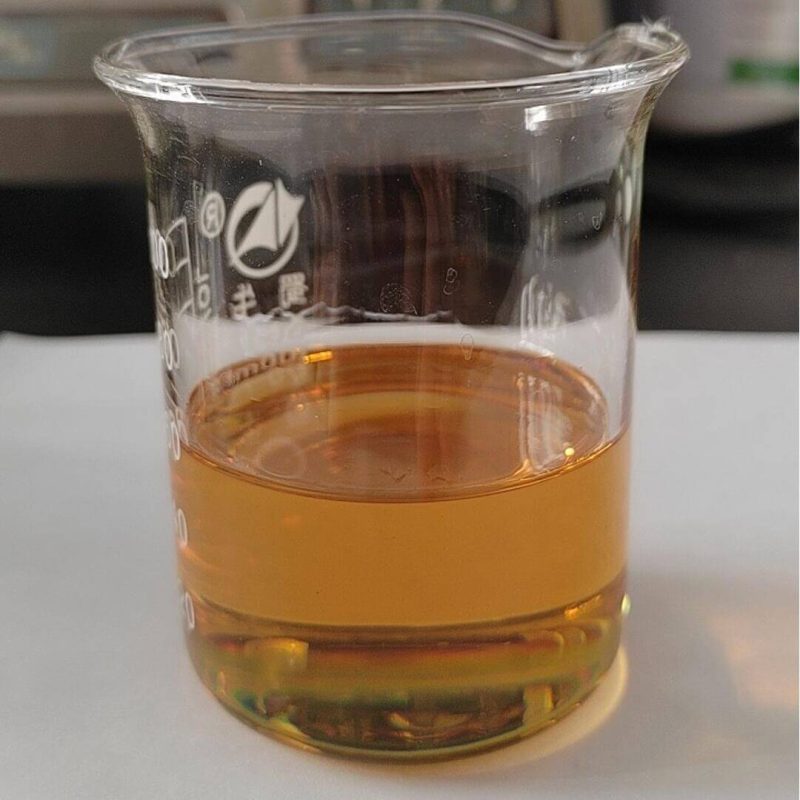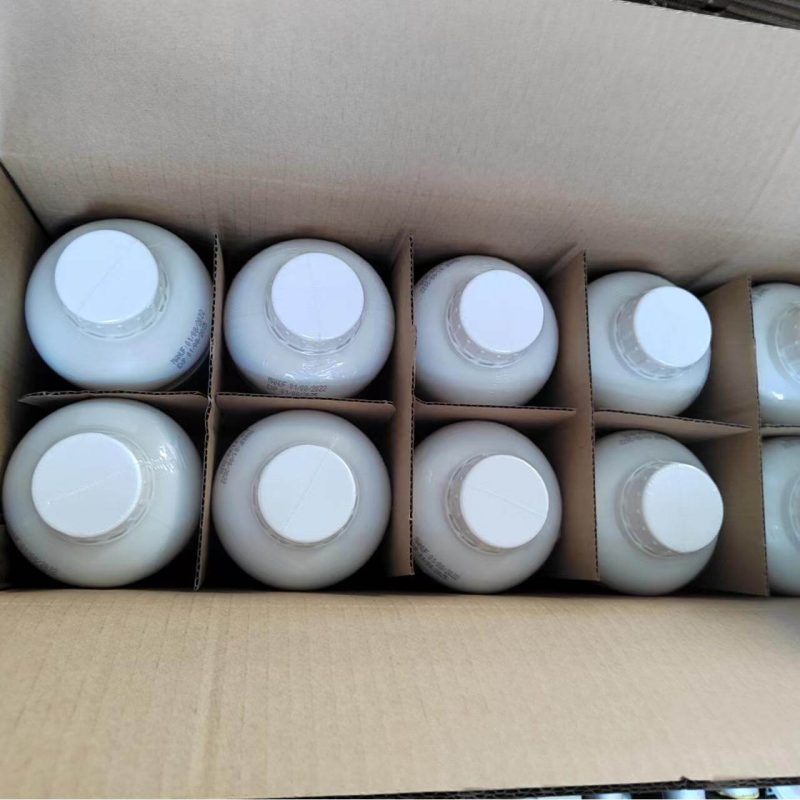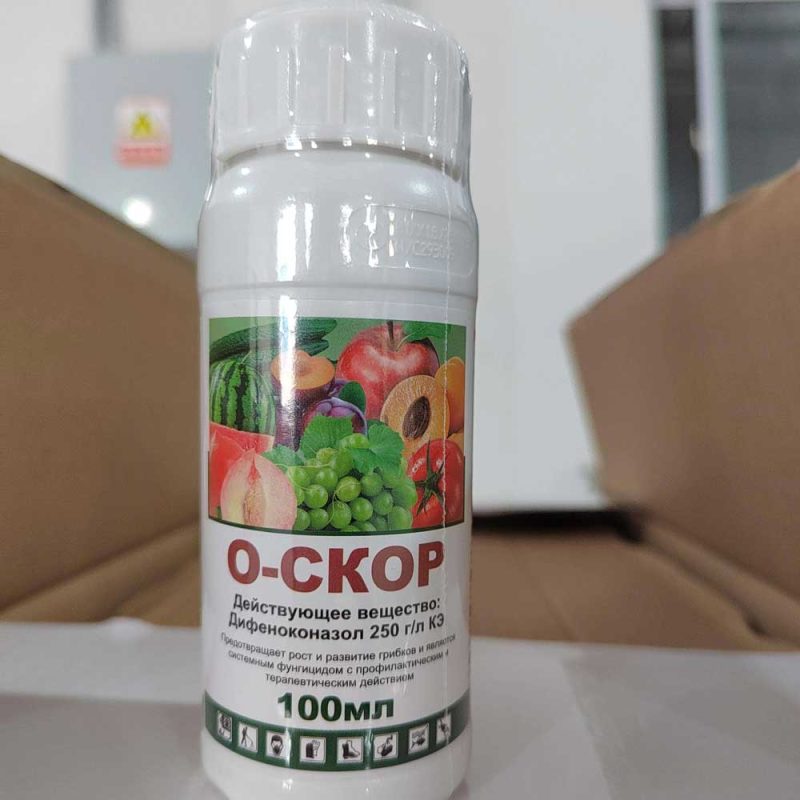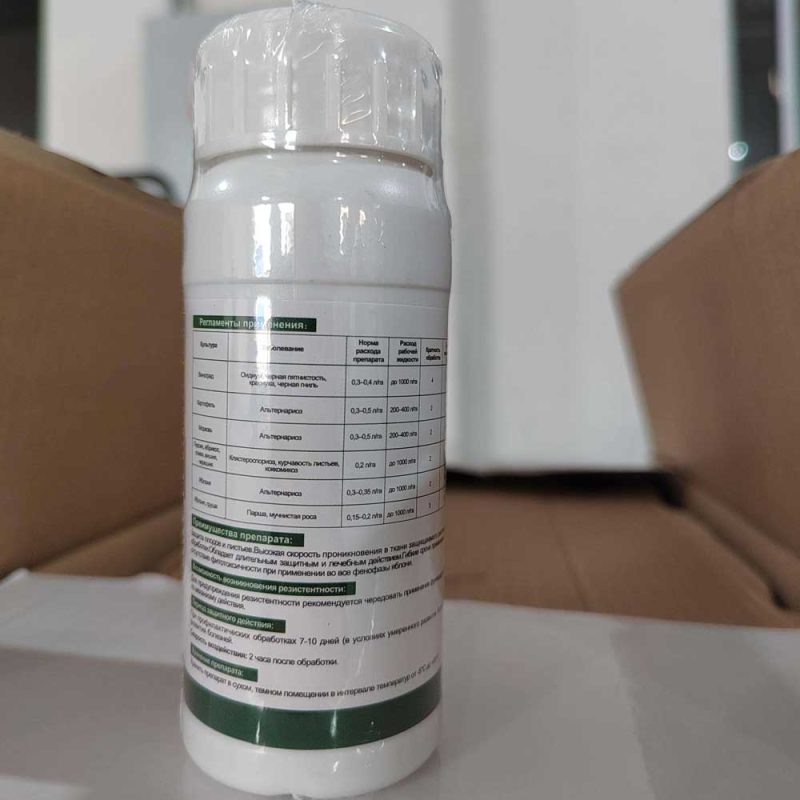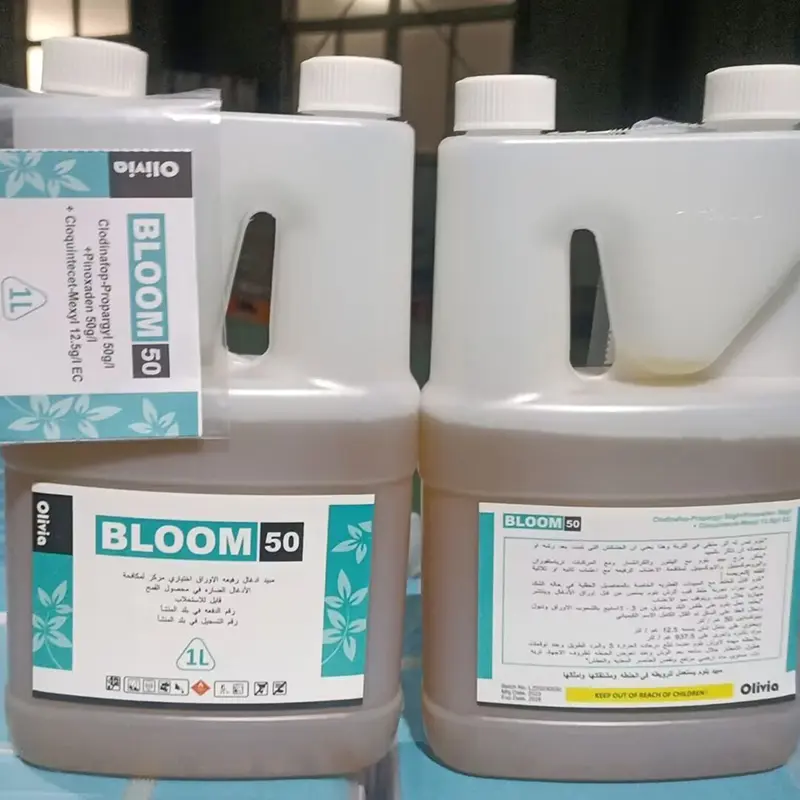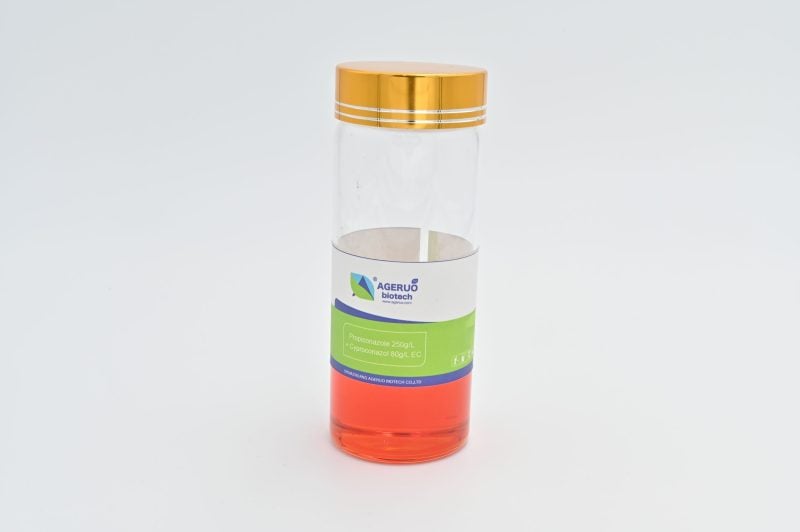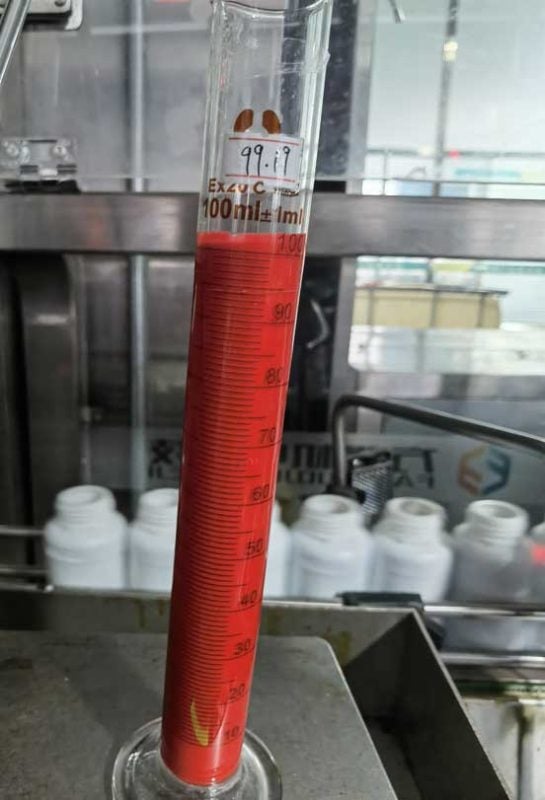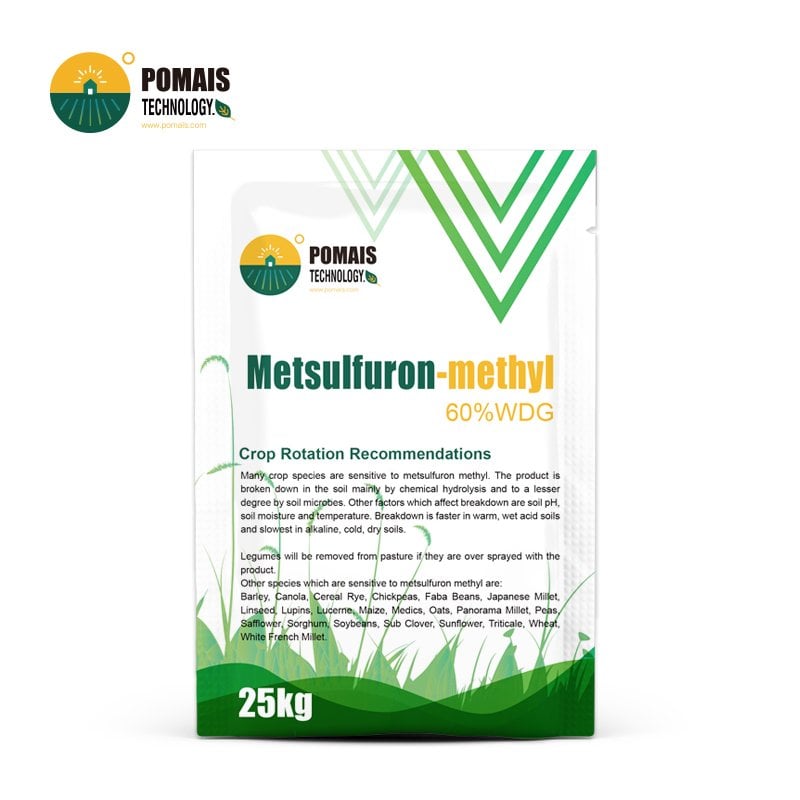Difenoconazole 250g/L EC | Broad-Spectrum Systemic Fungicide
Difenoconazole 250g/L EC is a high-performance broad-spectrum systemic fungicide designed to protect your crops from some of the most damaging fungal diseases in agriculture. Whether you’re growing fruits, vegetables, or cereals, this triazole-based formulation provides long-lasting protection, deep tissue penetration, and proven curative and preventive power—all with one easy-to-use emulsifiable concentrate.
Backed by global field data and trusted by farmers worldwide, Difenoconazole 250g/L EC works systemically to inhibit ergosterol biosynthesis—a vital process in fungal cell membrane formation—effectively stopping pathogens from growing, reproducing, and infecting new tissues.
With increasing pressure from blights, spots, rusts, and mildews, you need more than a basic fungicide. You need a solution that delivers:
- Preventive, curative, and eradicative activity in one formulation
- Compatibility with multiple crops and climates
- Strong residual effect with minimal crop stress
- Flexible tank-mix options and field-tested reliability
- Regulatory-compliant quality with global delivery support
Whether you’re a grower, agronomist, or distributor, Difenoconazole 250g/L EC gives you the confidence to protect yield, improve crop quality, and meet seasonal disease challenges head-on.
Because when disease pressure rises, your fungicide shouldn’t flinch.
- Designed for Professional Buyers & Bulk Orders
- This product is available for business purchase and large-scale distribution.
- We support custom packaging, labeling, and formulation to meet your market needs.
- Let’s build your brand together.

About Difenoconazole 250g/L EC | Broad-Spectrum Systemic Fungicide
About Difenoconazole 250g/L EC | Broad-Spectrum Systemic Fungicide
| Product Name | Difenoconazole 250g/L EC |
| Chemical Name (IUPAC) | 1-[2-[2-chloro-4-(4-chlorophenoxy)phenyl]-4-methyl-1,3-dioxolan-2-ylmethyl]-1H-1,2,4-triazole |
| CAS Number | 119446-68-3 |
| Molecular Formula | C₁₉H₁₇Cl₂N₃O₃ |
| Molecular Weight | 406.27 g/mol |
| Appearance | Light brown to light yellow liquid |
| Solubility | Slightly soluble in water (8.9 mg/L at 25°C); soluble in organic solvents |
| Mode of Action | Systemic triazole fungicide that inhibits ergosterol biosynthesis, providing preventive and curative control against a broad spectrum of fungal diseases |
| Formulation Type | Emulsifiable Concentrate (EC) |
| Target Crops | Fruits (e.g., mangoes), vegetables, cereals, and other field crops |
| Target Diseases | Effective against various fungal pathogens, including Ascomycetes, Basidiomycetes, and Deuteromycetes |
| Application Rate | Varies by crop and disease severity; for mangoes, up to three foliar applications at 0.125 kg ai/ha per application, with a 14-day interval and a 7-day pre-harvest interval |
| Application Method | Foliar spray with adequate water coverage |
| Toxicity Classification | Moderately toxic; handle with care and follow safety guidelines |
| Shelf Life | Stable under recommended storage conditions; refer to manufacturer’s guidelines |
| Packaging Options | Available in various sizes; consult supplier for specific packaging options |
| Storage Conditions | Store in a cool, dry, and well-ventilated area away from food, feed, and incompatible materials |
| Compatibility | Generally compatible with other fungicides; however, a compatibility test is recommended before tank mixing |
| Precautions | Use personal protective equipment during handling and application; avoid inhalation and skin contact; do not apply near water bodies to prevent environmental contamination |
How It Works: Systemic Protection from the Inside Out
Difenoconazole is a systemic fungicide—which means it doesn’t just stay on the surface. It moves inside the plant, travels through the tissues, and protects both treated leaves and new growth that appears after spraying.
So how does it stop the disease?
Difenoconazole works by blocking a vital process that fungi need to grow. Specifically, it inhibits ergosterol biosynthesis—this is a fancy way of saying it stops the fungus from building strong cell walls. Without ergosterol, fungal cells become weak and can’t survive or spread.
Simple Breakdown:
- Systemic or contact? → It’s systemic. It moves inside the plant to protect it from the inside
- What does it stop? → It blocks fungi from growing and spreading
- How does it protect? → It kills existing infections and also protects healthy parts from getting sick
- What kinds of fungi? → It works on many groups, including:
- Ascomycetes (like powdery mildew and scab)
- Basidiomycetes (like rusts)
- Deuteromycetes (like early blight)
Why Systemic Matters:
- Protects new leaves even after spraying
- Works even if some leaves weren’t fully covered
- Lasts longer and needs fewer applications than contact fungicides
In short: Difenoconazole doesn’t just treat the problem—it helps prevent the next one.
Where to Use It: Crops and Diseases Controlled by Difenoconazole 250g/L EC
Difenoconazole 250g/L EC is a reliable tool across many crop types—from field grains to high-value fruits and vegetables. It controls a wide range of fungal diseases that can cause leaf damage, fruit rot, yield loss, and even crop failure.
Whether you’re dealing with powdery mildew on strawberries, blight on tomatoes, or scab in citrus orchards, this broad-spectrum systemic fungicide is made to deliver results.
Common Crops and Their Fungal Problems
| Crop | Common Diseases Controlled | Application Method |
|---|---|---|
| Wheat / Barley | Rust, Scab, Powdery Mildew | Seed treatment or foliar spray |
| Tomato | Early Blight, Late Blight | Foliar spray |
| Grapes | Anthracnose, Black Rot | Foliar spray |
| Banana | Leaf Spot, Sigatoka | Foliar spray |
| Citrus | Citrus Scab | Foliar spray |
| Strawberry | Powdery Mildew | Foliar spray |
| Watermelon | Vine Blight, Leaf Spot | Foliar spray |
| Mango | Leaf Spot, Powdery Mildew | Foliar spray |
Why Farmers Use Difenoconazole on These Crops:
- Controls early-stage infections, preventing disease spread
- Helps protect market value by reducing visible damage
- Compatible with integrated pest and disease programs
- Approved for multiple spray cycles per season
No matter if you’re managing a vineyard, a citrus grove, or a vegetable field, difenoconazole fungicide helps you keep your crops clean, healthy, and ready for harvest.
How to Use Difenoconazole 250g/L EC: Simple, Safe, and Effective
Using Difenoconazole 250g/L EC is straightforward—but using it correctly is key to getting the best results. Whether you’re applying it as a foliar spray or a seed treatment, following the right timing and dosage ensures maximum protection with minimum waste.
Application Methods
1. Foliar Spray (Most Common Use)
Spray directly onto the leaves and stems of the plant, especially when signs of disease are visible or expected. This is ideal for fruits, vegetables, and field crops.
- Use clean water and proper sprayer calibration
- Ensure full coverage, especially on the underside of leaves
- Apply early in the morning or late afternoon to avoid fast evaporation
2. Seed Treatment (For Wheat and Barley)
Protects seedlings from fungal attack right from the start. Mix with seed dressing equipment to coat the seeds evenly.
Recommended Dosage by Crop
| Crop | Dosage | Application Frequency |
|---|---|---|
| Tomato | 83–125 g per 100 L water | Every 10–14 days |
| Grapes | 50–67 g per 100 L water | 2–3 applications per cycle |
| Banana | 80–100 ml per hectare | Repeat as needed based on disease pressure |
| Wheat / Barley (Seed) | 3–24 g per 100 kg of seeds | One-time before planting |
| Watermelon | 50–80 g per hectare | Apply at early stage of infection |
| Strawberry / Citrus | 20–50 g per 100 L water | Regular preventive sprays recommended |
Best Practice Tips
- Start early: Apply at first sign of disease or in advance during known high-risk periods
- Reapply based on local conditions, typically every 10–14 days
- Rainfast: Avoid spraying within 2 hours of expected rain
- Tank mix: Compatible with many fungicides and insecticides—but always do a jar test first
- Interval to harvest: Observe a 7-day pre-harvest interval (PHI) for treated crops like mangoes
With the right timing and technique, Difenoconazole fungicide gives you clean leaves, healthy plants, and peace of mind—season after season.
Why Choose Difenoconazole 250g/L EC? The Right Fungicide for the Job
In today’s farming, you can’t afford to guess. You need products that are proven, reliable, and profitable. That’s exactly what Difenoconazole 250g/L EC offers—a fungicide that checks all the boxes and leaves your crops protected, clean, and market-ready.
Here’s why growers keep coming back to this broad-spectrum systemic fungicide:
1. Powerful Disease Control
Difenoconazole stops fungi before they spread—and also cleans up existing infections. From early blight to leaf spot, it works fast and thoroughly.
2. True Systemic Action
Not just surface-level control. This fungicide moves inside the plant to protect new growth too. It’s a smart shield that grows with your crop.
3. Wide Crop Compatibility
Tomatoes, grapes, wheat, bananas, citrus, mangoes, watermelons—you name it, difenoconazole fungicide can handle it. It’s safe on dozens of crops when used as directed.
4. Long-Lasting Protection
With longer residual activity than many contact fungicides, you spray less often and stay protected longer. That saves time, labor, and money.
5. Flexible Formulation (Difenoconazole 25 EC)
Available as an Emulsifiable Concentrate, this formulation is easy to mix, stable in storage, and works well in solo applications or tank mixes.
6. Trusted by Professionals
Difenoconazole is not a new name in the market—it’s a proven active ingredient used in global agriculture, including many leading difenoconazole brand names.
Whether you grow to feed your family or supply supermarkets, Difenoconazole helps you protect every harvest with confidence.
Packaging Options and Custom Supply Support
As a global supplier of difenoconazole 25 EC, we understand that packaging, logistics, and documentation are just as important as product performance. Whether you’re a regional distributor, importer, or agricultural program manager, we provide flexible packaging solutions and full-service support to help you bring this product to market efficiently.
Standard Packaging Formats
| Container Type | Volume Options | Recommended Use |
|---|---|---|
| HDPE Bottle | 100 ml, 250 ml, 500 ml, 1 L | Retail and small-acreage applications |
| Jerry Can | 5 L, 10 L, 20 L | Farm-scale and regional distribution |
| Bulk Drum | 200 L | Institutional use and repackaging |
| IBC Tank | 1000 L | Central warehousing, large-scale operations |
All containers are:
- Tamper-evident and leak-proof
- GHS-compliant and export-ready
- Available with multilingual labels or white-label OEM branding
OEM and Private Label Services
We offer full OEM/ODM services for clients looking to build or expand their own difenoconazole fungicide brand:
- Custom labels with your language, logo, and regulatory format
- Barcode, batch tracking, and security sticker options
- Technical documents: COA, MSDS, TDS, field trial reports, and registration dossiers
- Label templates aligned with your national pesticide authority requirements
Global Supply and Delivery
- On-time delivery to Asia, Africa, Latin America, Eastern Europe, and the Middle East
- Flexible Minimum Order Quantities (MOQs) for developing markets
- Support for export clearance, third-party inspection (SGS, BV), and container loading monitoring
Our supply model is designed to support both large-scale agrochemical programs and competitive retail brand development.
Safety Guidelines and Storage Instructions
Difenoconazole 250g/L EC is a professional-use systemic fungicide with low application rates and strong field performance. Like all crop protection products, it must be used with care, following proper handling, storage, and environmental safety practices.
Safe Handling Guidelines
- Wear protective gear: Use gloves, goggles, long-sleeved clothing, and a mask during mixing and spraying
- Avoid contact: Do not inhale spray mist or allow concentrate to touch skin or eyes
- Wash after handling: Rinse hands, face, and exposed skin after use
- Keep away from children and animals: Store out of reach at all times
- Avoid contamination: Do not apply near fishponds, rivers, or sensitive ecosystems
Storage Recommendations
- Temperature range: Store between 5°C and 35°C (41°F to 95°F)
- Environment: Keep in a dry, well-ventilated area, away from sunlight and heat sources
- Sealing: Ensure containers are tightly closed when not in use
- Compatibility: Do not store near food, feed, or oxidizing agents
- Shelf life: Stable for up to 2 years under proper storage conditions
Transportation Information
| Aspect | Description |
|---|---|
| Classification | Not classified as hazardous for land or sea transport |
| Labeling | GHS/FAO-compliant; includes batch number, hazard symbols, and instructions |
| Packaging | UN-rated HDPE containers with inner seal and tamper-evident caps |
| Spill Response | Use absorbent materials, avoid water contamination, dispose via approved channels |
Following these guidelines ensures the product remains stable, compliant, and effective from factory to field.
Frequently Asked Questions (FAQ) and Conversion Guide
Is Difenoconazole systemic or contact?
Difenoconazole is a systemic fungicide, meaning it moves inside the plant after application. It protects treated areas and also shields new growth from infection. This gives it a longer-lasting and more reliable effect than contact-only fungicides.
What types of diseases does Difenoconazole control?
It is effective against a broad spectrum of fungal diseases, including:
- Powdery mildew
- Rust
- Anthracnose
- Leaf spot
- Scab
- Blights (early and late)
It works on fungal groups like Ascomycetes, Basidiomycetes, and Deuteromycetes, making it suitable for various crops and climates.
Can I use Difenoconazole on fruit and vegetable crops?
Yes. Difenoconazole fungicide is commonly used on tomatoes, grapes, mangoes, citrus, bananas, watermelon, strawberries, and more. Always follow crop-specific dosage guidelines and pre-harvest intervals for safe and effective use.
Is it safe to mix Difenoconazole with other products?
In most cases, yes. It can be tank-mixed with other fungicides and insecticides. However, a jar test is recommended before full-scale use to confirm physical compatibility and avoid antagonism.
What’s the pre-harvest interval (PHI) for treated crops?
This varies by crop. For example, mangoes require a 7-day PHI after the final spray. Always check local label requirements and observe safety intervals before harvesting.
How can I buy Difenoconazole 250g/L EC?
We offer:
- Direct factory supply for importers and distributors
- OEM and private label service
- Flexible packaging from 100ml to 1000L IBC
- COA, MSDS, and full registration support available
Ready to Take the Next Step?
If you’re sourcing a trusted difenoconazole supplier, building a brand with OEM fungicide products, or simply looking for a reliable disease control solution with consistent field results—we’re here to support you.
- Request a sample
- Get a quotation
- Receive registration documents
- Start OEM customization
Our team responds quickly and ships globally.
Difenoconazole 250g/L EC: The broad-spectrum systemic fungicide that works, sells, and scales.
| Product Name | Difenoconazole 250g/L EC |
| Chemical Name (IUPAC) | 1-[2-[2-chloro-4-(4-chlorophenoxy)phenyl]-4-methyl-1,3-dioxolan-2-ylmethyl]-1H-1,2,4-triazole |
| CAS Number | 119446-68-3 |
| Molecular Formula | C₁₉H₁₇Cl₂N₃O₃ |
| Molecular Weight | 406.27 g/mol |
| Appearance | Light brown to light yellow liquid |
| Solubility | Slightly soluble in water (8.9 mg/L at 25°C); soluble in organic solvents |
| Mode of Action | Systemic triazole fungicide that inhibits ergosterol biosynthesis, providing preventive and curative control against a broad spectrum of fungal diseases |
| Formulation Type | Emulsifiable Concentrate (EC) |
| Target Crops | Fruits (e.g., mangoes), vegetables, cereals, and other field crops |
| Target Diseases | Effective against various fungal pathogens, including Ascomycetes, Basidiomycetes, and Deuteromycetes |
| Application Rate | Varies by crop and disease severity; for mangoes, up to three foliar applications at 0.125 kg ai/ha per application, with a 14-day interval and a 7-day pre-harvest interval |
| Application Method | Foliar spray with adequate water coverage |
| Toxicity Classification | Moderately toxic; handle with care and follow safety guidelines |
| Shelf Life | Stable under recommended storage conditions; refer to manufacturer’s guidelines |
| Packaging Options | Available in various sizes; consult supplier for specific packaging options |
| Storage Conditions | Store in a cool, dry, and well-ventilated area away from food, feed, and incompatible materials |
| Compatibility | Generally compatible with other fungicides; however, a compatibility test is recommended before tank mixing |
| Precautions | Use personal protective equipment during handling and application; avoid inhalation and skin contact; do not apply near water bodies to prevent environmental contamination |
How It Works: Systemic Protection from the Inside Out
Difenoconazole is a systemic fungicide—which means it doesn’t just stay on the surface. It moves inside the plant, travels through the tissues, and protects both treated leaves and new growth that appears after spraying.
So how does it stop the disease?
Difenoconazole works by blocking a vital process that fungi need to grow. Specifically, it inhibits ergosterol biosynthesis—this is a fancy way of saying it stops the fungus from building strong cell walls. Without ergosterol, fungal cells become weak and can’t survive or spread.
Simple Breakdown:
- Systemic or contact? → It’s systemic. It moves inside the plant to protect it from the inside
- What does it stop? → It blocks fungi from growing and spreading
- How does it protect? → It kills existing infections and also protects healthy parts from getting sick
- What kinds of fungi? → It works on many groups, including:
- Ascomycetes (like powdery mildew and scab)
- Basidiomycetes (like rusts)
- Deuteromycetes (like early blight)
Why Systemic Matters:
- Protects new leaves even after spraying
- Works even if some leaves weren’t fully covered
- Lasts longer and needs fewer applications than contact fungicides
In short: Difenoconazole doesn’t just treat the problem—it helps prevent the next one.
Where to Use It: Crops and Diseases Controlled by Difenoconazole 250g/L EC
Difenoconazole 250g/L EC is a reliable tool across many crop types—from field grains to high-value fruits and vegetables. It controls a wide range of fungal diseases that can cause leaf damage, fruit rot, yield loss, and even crop failure.
Whether you’re dealing with powdery mildew on strawberries, blight on tomatoes, or scab in citrus orchards, this broad-spectrum systemic fungicide is made to deliver results.
Common Crops and Their Fungal Problems
| Crop | Common Diseases Controlled | Application Method |
|---|---|---|
| Wheat / Barley | Rust, Scab, Powdery Mildew | Seed treatment or foliar spray |
| Tomato | Early Blight, Late Blight | Foliar spray |
| Grapes | Anthracnose, Black Rot | Foliar spray |
| Banana | Leaf Spot, Sigatoka | Foliar spray |
| Citrus | Citrus Scab | Foliar spray |
| Strawberry | Powdery Mildew | Foliar spray |
| Watermelon | Vine Blight, Leaf Spot | Foliar spray |
| Mango | Leaf Spot, Powdery Mildew | Foliar spray |
Why Farmers Use Difenoconazole on These Crops:
- Controls early-stage infections, preventing disease spread
- Helps protect market value by reducing visible damage
- Compatible with integrated pest and disease programs
- Approved for multiple spray cycles per season
No matter if you’re managing a vineyard, a citrus grove, or a vegetable field, difenoconazole fungicide helps you keep your crops clean, healthy, and ready for harvest.
How to Use Difenoconazole 250g/L EC: Simple, Safe, and Effective
Using Difenoconazole 250g/L EC is straightforward—but using it correctly is key to getting the best results. Whether you’re applying it as a foliar spray or a seed treatment, following the right timing and dosage ensures maximum protection with minimum waste.
Application Methods
1. Foliar Spray (Most Common Use)
Spray directly onto the leaves and stems of the plant, especially when signs of disease are visible or expected. This is ideal for fruits, vegetables, and field crops.
- Use clean water and proper sprayer calibration
- Ensure full coverage, especially on the underside of leaves
- Apply early in the morning or late afternoon to avoid fast evaporation
2. Seed Treatment (For Wheat and Barley)
Protects seedlings from fungal attack right from the start. Mix with seed dressing equipment to coat the seeds evenly.
Recommended Dosage by Crop
| Crop | Dosage | Application Frequency |
|---|---|---|
| Tomato | 83–125 g per 100 L water | Every 10–14 days |
| Grapes | 50–67 g per 100 L water | 2–3 applications per cycle |
| Banana | 80–100 ml per hectare | Repeat as needed based on disease pressure |
| Wheat / Barley (Seed) | 3–24 g per 100 kg of seeds | One-time before planting |
| Watermelon | 50–80 g per hectare | Apply at early stage of infection |
| Strawberry / Citrus | 20–50 g per 100 L water | Regular preventive sprays recommended |
Best Practice Tips
- Start early: Apply at first sign of disease or in advance during known high-risk periods
- Reapply based on local conditions, typically every 10–14 days
- Rainfast: Avoid spraying within 2 hours of expected rain
- Tank mix: Compatible with many fungicides and insecticides—but always do a jar test first
- Interval to harvest: Observe a 7-day pre-harvest interval (PHI) for treated crops like mangoes
With the right timing and technique, Difenoconazole fungicide gives you clean leaves, healthy plants, and peace of mind—season after season.
Why Choose Difenoconazole 250g/L EC? The Right Fungicide for the Job
In today’s farming, you can’t afford to guess. You need products that are proven, reliable, and profitable. That’s exactly what Difenoconazole 250g/L EC offers—a fungicide that checks all the boxes and leaves your crops protected, clean, and market-ready.
Here’s why growers keep coming back to this broad-spectrum systemic fungicide:
1. Powerful Disease Control
Difenoconazole stops fungi before they spread—and also cleans up existing infections. From early blight to leaf spot, it works fast and thoroughly.
2. True Systemic Action
Not just surface-level control. This fungicide moves inside the plant to protect new growth too. It’s a smart shield that grows with your crop.
3. Wide Crop Compatibility
Tomatoes, grapes, wheat, bananas, citrus, mangoes, watermelons—you name it, difenoconazole fungicide can handle it. It’s safe on dozens of crops when used as directed.
4. Long-Lasting Protection
With longer residual activity than many contact fungicides, you spray less often and stay protected longer. That saves time, labor, and money.
5. Flexible Formulation (Difenoconazole 25 EC)
Available as an Emulsifiable Concentrate, this formulation is easy to mix, stable in storage, and works well in solo applications or tank mixes.
6. Trusted by Professionals
Difenoconazole is not a new name in the market—it’s a proven active ingredient used in global agriculture, including many leading difenoconazole brand names.
Whether you grow to feed your family or supply supermarkets, Difenoconazole helps you protect every harvest with confidence.
Packaging Options and Custom Supply Support
As a global supplier of difenoconazole 25 EC, we understand that packaging, logistics, and documentation are just as important as product performance. Whether you’re a regional distributor, importer, or agricultural program manager, we provide flexible packaging solutions and full-service support to help you bring this product to market efficiently.
Standard Packaging Formats
| Container Type | Volume Options | Recommended Use |
|---|---|---|
| HDPE Bottle | 100 ml, 250 ml, 500 ml, 1 L | Retail and small-acreage applications |
| Jerry Can | 5 L, 10 L, 20 L | Farm-scale and regional distribution |
| Bulk Drum | 200 L | Institutional use and repackaging |
| IBC Tank | 1000 L | Central warehousing, large-scale operations |
All containers are:
- Tamper-evident and leak-proof
- GHS-compliant and export-ready
- Available with multilingual labels or white-label OEM branding
OEM and Private Label Services
We offer full OEM/ODM services for clients looking to build or expand their own difenoconazole fungicide brand:
- Custom labels with your language, logo, and regulatory format
- Barcode, batch tracking, and security sticker options
- Technical documents: COA, MSDS, TDS, field trial reports, and registration dossiers
- Label templates aligned with your national pesticide authority requirements
Global Supply and Delivery
- On-time delivery to Asia, Africa, Latin America, Eastern Europe, and the Middle East
- Flexible Minimum Order Quantities (MOQs) for developing markets
- Support for export clearance, third-party inspection (SGS, BV), and container loading monitoring
Our supply model is designed to support both large-scale agrochemical programs and competitive retail brand development.
Safety Guidelines and Storage Instructions
Difenoconazole 250g/L EC is a professional-use systemic fungicide with low application rates and strong field performance. Like all crop protection products, it must be used with care, following proper handling, storage, and environmental safety practices.
Safe Handling Guidelines
- Wear protective gear: Use gloves, goggles, long-sleeved clothing, and a mask during mixing and spraying
- Avoid contact: Do not inhale spray mist or allow concentrate to touch skin or eyes
- Wash after handling: Rinse hands, face, and exposed skin after use
- Keep away from children and animals: Store out of reach at all times
- Avoid contamination: Do not apply near fishponds, rivers, or sensitive ecosystems
Storage Recommendations
- Temperature range: Store between 5°C and 35°C (41°F to 95°F)
- Environment: Keep in a dry, well-ventilated area, away from sunlight and heat sources
- Sealing: Ensure containers are tightly closed when not in use
- Compatibility: Do not store near food, feed, or oxidizing agents
- Shelf life: Stable for up to 2 years under proper storage conditions
Transportation Information
| Aspect | Description |
|---|---|
| Classification | Not classified as hazardous for land or sea transport |
| Labeling | GHS/FAO-compliant; includes batch number, hazard symbols, and instructions |
| Packaging | UN-rated HDPE containers with inner seal and tamper-evident caps |
| Spill Response | Use absorbent materials, avoid water contamination, dispose via approved channels |
Following these guidelines ensures the product remains stable, compliant, and effective from factory to field.
Frequently Asked Questions (FAQ) and Conversion Guide
Is Difenoconazole systemic or contact?
Difenoconazole is a systemic fungicide, meaning it moves inside the plant after application. It protects treated areas and also shields new growth from infection. This gives it a longer-lasting and more reliable effect than contact-only fungicides.
What types of diseases does Difenoconazole control?
It is effective against a broad spectrum of fungal diseases, including:
- Powdery mildew
- Rust
- Anthracnose
- Leaf spot
- Scab
- Blights (early and late)
It works on fungal groups like Ascomycetes, Basidiomycetes, and Deuteromycetes, making it suitable for various crops and climates.
Can I use Difenoconazole on fruit and vegetable crops?
Yes. Difenoconazole fungicide is commonly used on tomatoes, grapes, mangoes, citrus, bananas, watermelon, strawberries, and more. Always follow crop-specific dosage guidelines and pre-harvest intervals for safe and effective use.
Is it safe to mix Difenoconazole with other products?
In most cases, yes. It can be tank-mixed with other fungicides and insecticides. However, a jar test is recommended before full-scale use to confirm physical compatibility and avoid antagonism.
What’s the pre-harvest interval (PHI) for treated crops?
This varies by crop. For example, mangoes require a 7-day PHI after the final spray. Always check local label requirements and observe safety intervals before harvesting.
How can I buy Difenoconazole 250g/L EC?
We offer:
- Direct factory supply for importers and distributors
- OEM and private label service
- Flexible packaging from 100ml to 1000L IBC
- COA, MSDS, and full registration support available
Ready to Take the Next Step?
If you’re sourcing a trusted difenoconazole supplier, building a brand with OEM fungicide products, or simply looking for a reliable disease control solution with consistent field results—we’re here to support you.
- Request a sample
- Get a quotation
- Receive registration documents
- Start OEM customization
Our team responds quickly and ships globally.
Difenoconazole 250g/L EC: The broad-spectrum systemic fungicide that works, sells, and scales.
Related Products
Latest News

